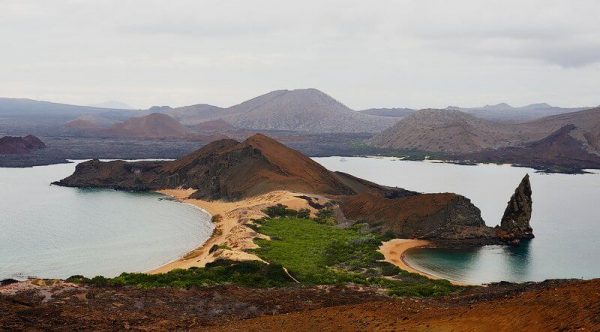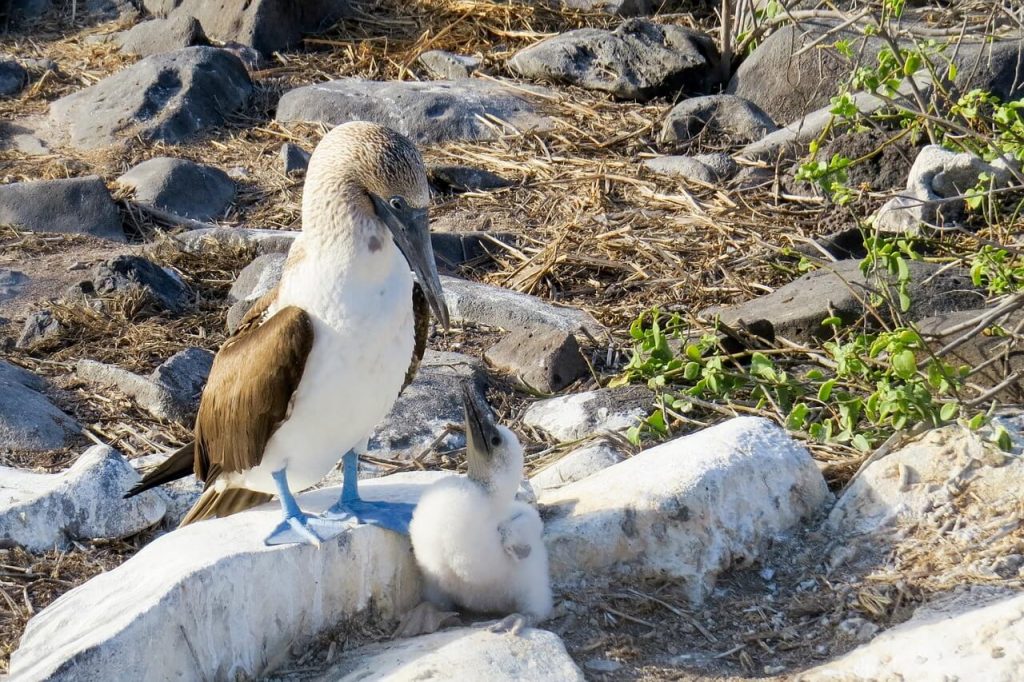
Nestled in the vast expanse of the Pacific Ocean, the Galapagos Islands have captivated the minds of both adventurers and scientists for centuries. It is here, in this remote archipelago, that evolution truly comes to life. With its remarkable array of diverse ecosystems, untouched landscapes, and unique wildlife, the Galapagos Islands offer an unparalleled opportunity to witness nature’s extraordinary processes. Join us on a transformative journey exploring the Galapagos Islands where evolution comes to life.
The Enchanted Isles: A Haven of Biodiversity
A Geological Masterpiece:
The Galapagos Islands owe their existence to powerful volcanic forces that shaped their dramatic landscapes. From the towering shield volcanoes of Isabela Island, such as Sierra Negra and Volcan Alcedo, to the black lava fields and lunar-like landscapes of Fernandina Island, the archipelago showcases a geological masterpiece.
The Isolated Oasis:
Situated around 1,000 kilometers off the coast of Ecuador, the Galapagos Islands have been geographically isolated for millions of years. This isolation has allowed for the evolution of unique and endemic species found nowhere else on Earth. It is a living testament to how isolation can shape and foster biodiversity.
Ecosystems in Harmony:
Despite their small size, the Galapagos Islands boast an astonishing range of ecosystems, from lush highland forests to arid coastal plains. Each island offers a distinct microcosm of life, with varying plant species adapted to their specific environments. It is this harmonious balance of ecosystems that has made the Galapagos a haven for evolutionary marvels.
Darwin’s Inspiration: Evolution in Action
Darwin’s Voyage of Discovery:
The Galapagos Islands gained international recognition when Charles Darwin, during his voyage aboard the HMS Beagle in 1835, observed the islands’ unique flora and fauna. Darwin’s observations played a pivotal role in the development of his groundbreaking theory of evolution through natural selection.
Natural Selection at Play:
The Galapagos Islands offer an extraordinary opportunity to witness the intricate workings of natural selection. The iconic Galapagos finches, with their diverse beak shapes, perfectly illustrate how variations in traits can lead to adaptive advantages in different environments. These subtle variations have driven the evolution of separate species of finches across the islands.
Endemic Species Galore:
One of the most remarkable features of the Galapagos Islands is the abundance of endemic species. From the iconic Galapagos giant tortoises, each with its own distinct shell shape and size, to the world’s only marine iguanas, which have adapted to feed on underwater algae, these species represent unique evolutionary journeys found nowhere else on Earth.
Meeting the Galapagos Giants
The Gentle Giants of the Sea: Galapagos Tortoises:

The Galapagos Islands are renowned for their giant tortoises, which can live for over a century. These gentle creatures symbolize the archipelago’s timeless beauty and serve as a living link to its ancient past. Encounter them in their natural habitat, and marvel at their slow and deliberate movements.
Marine Marvels: Galapagos Marine Iguanas:
Venturing into the pristine waters surrounding the islands, you’ll encounter the unique Galapagos marine iguanas. These remarkable reptiles have adapted to a marine lifestyle, diving into the depths to feed on marine algae. Witness them sunning themselves on rocky shores, their dark, prehistoric forms contrasting against the vibrant blue waters.
Blue-Footed Boobies: A Comical Spectacle:
Prepare to be charmed by the comical courtship dances of the famous blue-footed boobies. These iconic seabirds exhibit their vibrant blue feet as part of their elaborate mating rituals. Watching their intricate dances and witnessing their precise dives into the water to catch fish is a true spectacle of nature.
Exploring the Pristine Landscapes
Volcanic Marvels: Sierra Negra and Volcan Alcedo:
Embark on an exhilarating hike to the summit of Sierra Negra, one of the most active volcanoes in the Galapagos. Witness the vast caldera, an otherworldly expanse of hardened lava, and be amazed by the breathtaking panoramic views. Volcan Alcedo, with its lush cloud forests and tortoise habitats, offers a different perspective on the volcanic landscapes.
Magnificent Marine Reserves: Devil’s Crown and Gordon Rocks:
Plunge into the crystal-clear waters and discover the vibrant marine reserves that surround the islands. Dive into the underwater wonderland of Devil’s Crown, a submerged volcanic crater teeming with an abundance of marine life, including colorful fish, rays, and sharks. Gordon Rocks, known for its unique geological formations, offers thrilling encounters with hammerhead sharks and other pelagic species.
Postcard-Worthy Beaches: Gardner Bay and Tortuga Bay:
Indulge in the tranquility of the Galapagos’ pristine beaches. Lounge on the white sands of Gardner Bay, where sea lions bask lazily under the equatorial sun. Explore Tortuga Bay, a breathtakingly beautiful beach known for its turquoise waters and gentle waves, ideal for swimming, snorkeling, and observing marine iguanas.
Protecting a Natural Treasure
Conservation Efforts: Balancing Tourism and Preservation:
Recognizing the fragility of the Galapagos ecosystem, conservation efforts are crucial to protect its natural treasures. Strict regulations, such as visitor quotas and designated trails, ensure the delicate balance between tourism and preservation, safeguarding the islands for future generations.
Sustainable Tourism: Treading Lightly in the Galapagos:
Sustainable tourism practices are a key aspect of preserving the Galapagos Islands. Local tour operators and eco-lodges focus on minimizing their environmental impact, employing renewable energy sources, and promoting responsible travel behaviors. Visitors are encouraged to respect the fragile ecosystems and adhere to conservation guidelines.
Community Involvement: The Galapagos Conservation Trust:
Local communities play an essential role in the conservation efforts of the Galapagos Islands. The Galapagos Conservation Trust works closely with local residents, providing education and resources to promote sustainable practices. Supporting local initiatives and community-led conservation projects ensures the long-term protection of this natural treasure.
The Galapagos Islands are a testament to the remarkable power of evolution and the importance of conservation. Through its geological wonders, endemic species, and captivating landscapes, this remote archipelago continues to inspire and awe visitors from around the world. As we explore this living laboratory of evolution, let us embrace our responsibility to protect and preserve this delicate ecosystem. The Galapagos Islands are a sanctuary where evolution thrives, reminding us of the intricate beauty and interconnectedness of all life on our planet. Embark on this transformative journey, where nature’s extraordinary processes come to life, and immerse yourself in the timeless allure of the Galapagos Islands.
